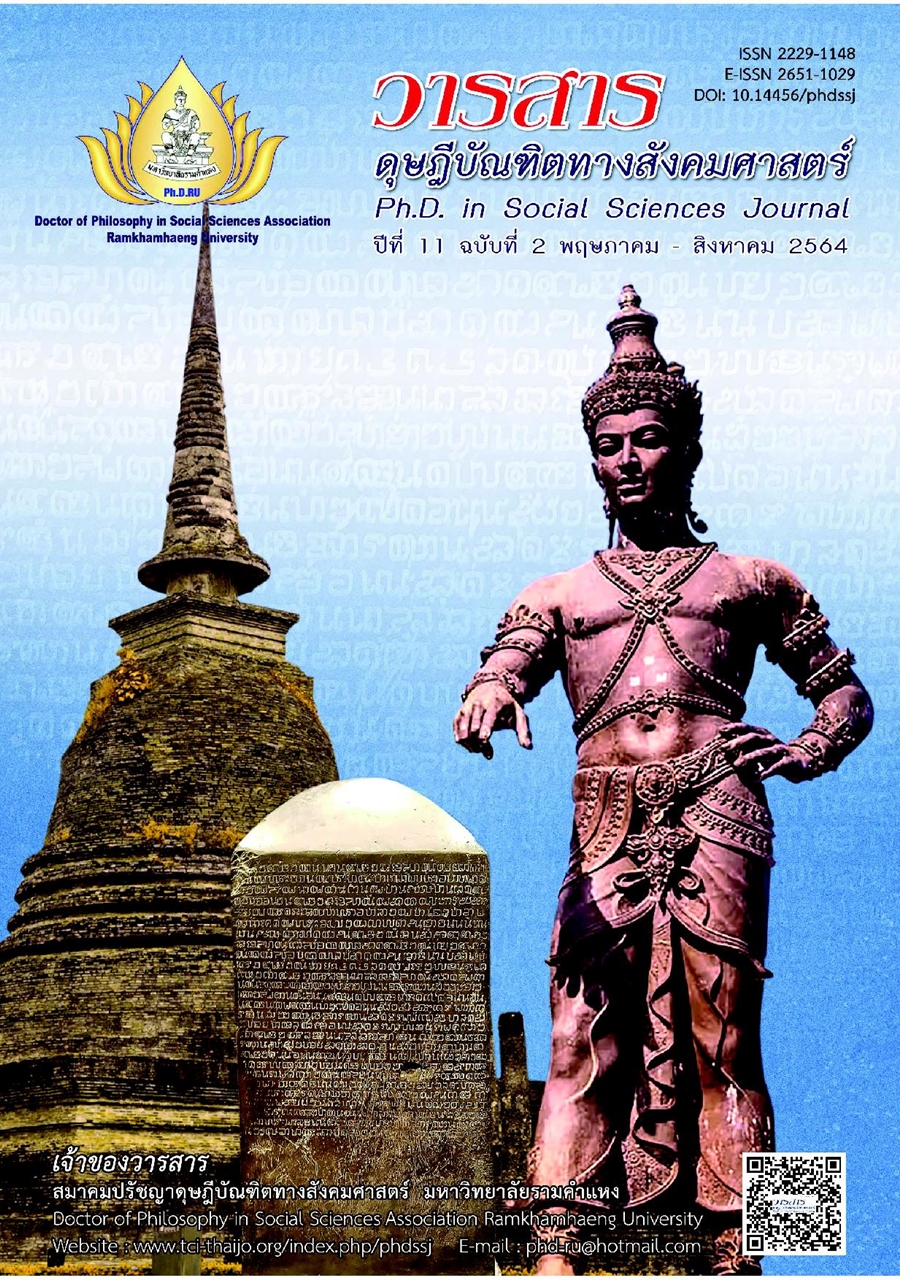การจัดการการท่องเที่ยวอาเซียนสำหรับนักท่องเที่ยวที่มีกำลังซื้อสูง
Main Article Content
บทคัดย่อ
บทความวิชาการนี้มีวัตถุประสงค์เพื่อวิเคราะห์การจัดการท่องเที่ยวอาเซียนสำหรับนักท่องเที่ยวที่กำลังซื้อสูง โดยประเมินสภาพแวดล้อมการแข่งขันของนักท่องเที่ยว เพื่อเพิ่มขีดความสามารถในการแข่งขันและความได้เปรียบ โดยใช้แนวคิด Five Forces Model ของ Michael E. Porter เป็นเครื่องมือสำหรับการวิเคราะห์ในการตรวจสอบความสามารถจากสภาพแวดล้อมการแข่งขันทางธุรกิจ
ผลการวิเคราะห์ พบว่า สภาพแวดล้อมในการแข่งขันและโอกาสทางธุรกิจ ด้าน (1) คู่แข่งรายเดิมในอุตสาหกรรม มีคู่แข่งเดิมหลายราย ทำให้มีส่วนแบ่งทางการตลาดค่อนข้างมาก (2) อำนาจการต่อรองของลูกค้า มีค่อนข้างมากเพราะมีสินค้าและบริการอื่นทดแทนจำนวนมากขึ้น (3) อำนาจต่อรองของผู้ขาย สามารถเปลี่ยนไปใช้สินค้าอื่นได้ แต่การเปลี่ยนแต่ละครั้งต้องเสียค่าใช้จ่ายทั้งโดยทางตรงและทางอ้อม ซึ่งเป็นอุปสรรคต่อการเปลี่ยนแปลง (4) ผู้เข้ามาใหม่ เกิดขึ้นเรื่อย ๆ จึงต้องสร้างเอกลักษณ์เพื่อเสริมความได้เปรียบทางการแข่งขัน และ (5) สินค้าหรือบริการทดแทน เป็นสิ่งที่ทำให้เกิดผลกระทบส่วนหนึ่ง ซึ่งต้องเฝ้าระวังโดยการติดตามสถานการณ์ วิจัยและพัฒนาเพื่อสร้างความได้เปรียบในการแข่งขัน จากการวิเคราะห์ปัจจัยทั้งห้าประการนี้ ผู้ประกอบการต้องสร้างกลยุทธ์ทางการแข่งขันที่จะสร้างโอกาสและป้องกันภัยคุกคามซึ่งเกิดจากสภาพแวดล้อมทางการแข่งขันภายนอกที่ส่งผลกระทบต่อธุรกิจ
Article Details
บทความวิชาการ บทความวิจัย และบทวิจารณ์หนังสือในวารสารดุษฎีบัณฑิตทางสังคมศาสตร์ เป็นความคิดเห็นของผู้เขียน มิใช่ของคณะผู้จัดทำ และมิใช่ความรับผิดชอบของสมาคมปรัชญาดุษฎีบัณฑิตทางสังคมศาสตร์ มหาวิทยาลัยรามคำแหง (กรณีการทำวิจัยในมนุษย์ ผู้วิจัยต้องผ่านการอบรมจริยธรรมการวิจัยในมนุษย์ และนำหลักฐานมาแสดง)
เอกสารอ้างอิง
Association of Southeast Asian Nations (ASEAN). (2015). ASEAN Tourism Strategic Plan 2016-2025. Retrieved from http://aec.utcc.ac.th/wp-content/uploads/2016/08/Asean-Tourism-Stratgic-Plan-2016-2025.pdf
Calderwood, L. U., & Soshkin, M. (2019). The travel & tourism competitiveness Report 2019. Travel and tourism at a Tipping Point. In World Economic Forum.
Cheng, D. S. (2013). Analyze the hotel industry in porter five competitive forces. Journal of Global Business Management, 9(3), 52-57.
Cronjé, D. F., & du Plessis, E. (2020). A review on tourism destination competitiveness. Journal of Hospitality and Tourism Management, 45, 256-265.
Fehr, E., & Falk, A. (1999). Wage rigidity in a competitive incomplete contract market. Journal of Political Economy, 107(1), 106-134.
Fernando, I. (2021). Assessing the Competitiveness of Sri Lanka’s Tourism in the COVID Period by Porter’s Diamond Model. In Handbook of Research on Strategies and Interventions to Mitigate COVID-19 Impact on SME’s (pp. 1-22): IGI Global.
Lovelock, C. H. (1996). Managing services. Prentice Hall.
Maria, R. S., Urata, S., & Intal, J. P. S. (2017). The ASEAN economic community into 2025 and beyond. Economic Research Institute for ASEAN and East Asia.
Ministry of Foreign Affairs, Kingdom of Thailand. (2019). Issuance of Visa. Retrieved from https://www.mfa.go.th/en/publicservice/5d5bcc2615e39c306000a316 [In Thai]
Royal Thai Embassy Rome, Republic of Italy. (2012). Summary of Countries and Territories entitled for Visa Exemption and Visa on Arrival to Thailand. Retrieved from http://www.thaiembassy.it/index.php/en?catid=0&id=389 [In Thai]
Porter, M. E. (1980). Competitive strategy: Techniques for analyzing industries and competitors. Free Press.
Pramanik, S. A. K., & Rakib, M. R. H. K. (2020). Strategic analysis of competitiveness of travel and tourism in Bangladesh. In Tourism Marketing in Bangladesh (pp. 87-108). Routledge.
Siamrath. (2019). TAT pushes the target for year 63, revenue growth of 10%, punching heavy tour bags at Niche Market. Retrieved from https://siamrath.co.th/n/89606 [In Thai]
Thepthiamthat, W. (2017). The development model of ASEAN tourism marketing management advantages as perceived by high end Thai tourists. Doctoral Dissertation in Buness, Siam University. [In Thai]
United Nations Educational, Scientific and Cultural Organization (UNESCO). (2020). World Heritage List. Retrieved from https://whc.unesco.org/en/list
Varelas, S., & Georgopoulos, N. (2017). Porter’s competitive forces in the modern globalized hospitality sector–the case of a Greek tourism destination. Journal of Tourism Research, 18, 121-131.


